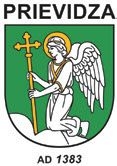
Prievidza (Heart of Upper Nitra)
The origins of today’s Prievidza settlement date back to the Stone Age. The fi rst written mention of Prievidza comes from 1113. In the fi rst half of the 14th century, Prievidza lay at the crossroads of important trade routes, which contributed to the development of trade and crafts. The oldest local crafts are the pottery and metalworking, later weaving was added to them, and so the predominantly agricultural and market centre gradually became a trade and craft centre. Queen Mary granted Prievidza town privileges on January 28, 1383. The city will commemorate both anniversaries in 2023. Prievidza in the middle of the Upper Nitra valley is surrounded by hills and mountains. The city is often considered a starting point to neighbouring Bojnice, but it also has its own historical monuments. One of the historical landmarks is the Church of the Assumption of the Virgin Mary on Mariánsky Hill. Part of the square is an unusual statue on the Monument to the Fallen in the Slovak Nation Uprising, characterized by the fi gure of a woman on the obelisk. This resistance monument contrast strongly with the more traditional trinity column, which stands further north in close vicinity to the historic Burgess House. Not far from the square there is the Gothic Church of St. Bartholomew from the 14th century with a preserved rib vault from around 1400. Its rarest piece of furniture is Ján Korvín monstrance. Just a few streets away there is the Piarist Church of the Holy Trinity with detailed ceiling frescoes and a magnifi cent altar with many delicately sculpted angels. A mosaic of light from the green and blue stained glass windows between the angels illuminates the facade of the church with a mystical glow. The church is on the most beautiful baroque buildings in Central Europe with unique decoration and furniture. The most signifi cant and extensive landmark ot the city is the sgraffi to decoration on the facades of residential buildings in the Píly settlement, which was built after 1950 for mining families in the SORELA style. Their authors are many important Slovak visual artists. Realized with the fi nancial support of the Ministry of Transport of the Slovak Republic.